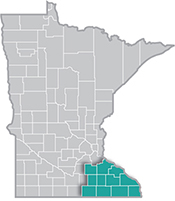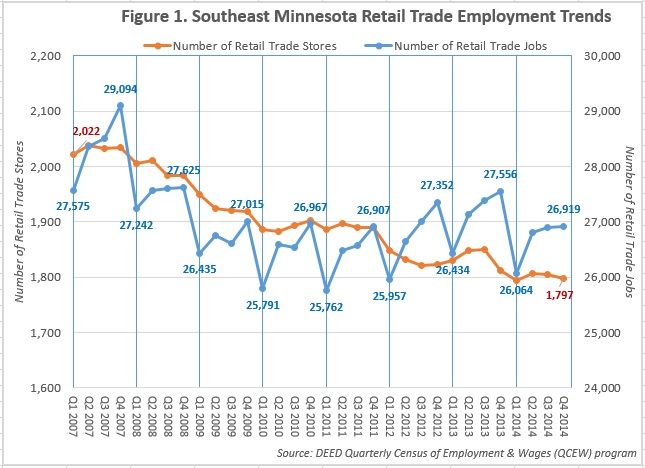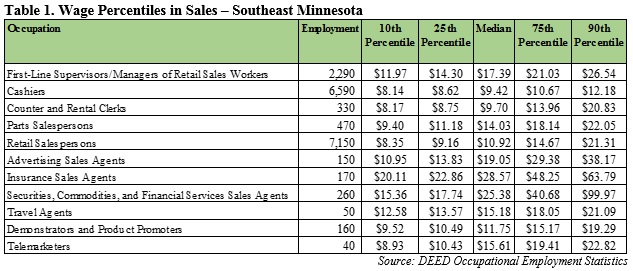 Southeast Minnesota is a health care and agricultural powerhouse. The region is home to the renowned Mayo Clinic and some of the world's most recognized food companies and brands.
Southeast Minnesota is a health care and agricultural powerhouse. The region is home to the renowned Mayo Clinic and some of the world's most recognized food companies and brands.
Advanced manufacturing is especially strong here, with machinery, chemicals, and electronics among the top products.
Want the freshest data delivered by email? Subscribe to our regional newsletters.
10/19/2015 2:23:55 PM
Retail trade has always been a large employing industry in Southeast Minnesota. With 26,675 jobs, retail trade provides 11.3 percent of total jobs and 15 percent of establishments in the region, making it the third largest industry behind health care and manufacturing. Despite these solid employment and establishment numbers, retail trade has seen a gradual decline in the number of jobs and firms over the last decade (Figure 1). In addition to severe declines during the Great Recession, this could also be due to an increase in online stores and purchases.

Quarterly employment trends in retail trade are similar every year. Hiring generally increases steadily over the course of the year, peaking in the fourth quarter as consumers and stores respond to increased demand from holiday shopping. However, quarterly employment increases were flatter in 2014 than in past years.
Average weekly wages in retail trade are not very high - at $453, they are 47.6 percent lower than those across all industries - likely due to the part-time and seasonal nature of many jobs. Yet, retail trade is still a significant contributor to total wages paid in the region, because it provides so many jobs.
Though many retail trade jobs are low wage, they can lead to others that pay significantly higher. The lower-wage jobs in Table 1 are generally those that appear within an actual retail store, such as cashiers and retail salespersons. However, they can be great training for other sales jobs - insurance sales agents, securities, commodities and financial services salespersons and advertising sales agents. Those jobs top out at much higher pay than most retail sales occupations.

Though the part-time and/or temporary nature of retail trade jobs also helps lead to lower wages, one point of consideration that might brighten things up is that these jobs could be a perfect fit for individuals looking for supplemental income. According to DEED's Job Vacancy Survey, 73 percent of current retail trade vacancies in the region are part-time, providing ample opportunities for people to gain added income, especially as employment increases during the potentially costly holiday season.
Retail trade may not be a career for some people, but it is a solid contributor to jobs and wages in Southeast Minnesota. Despite lower pay, it offers a multitude of benefits such as added income and work experience to gain and develop pertinent skills that can transfer to many other fields and careers, such as working with team members and customers and mathematical skills. So, for now, let's embrace retail trade and go shopping!
Contact Mark Schultz.